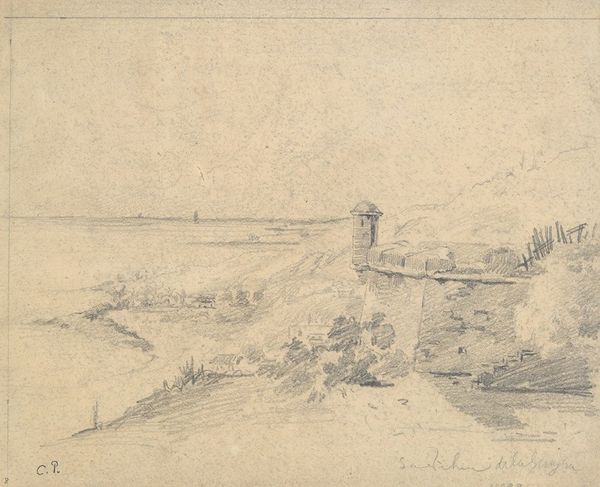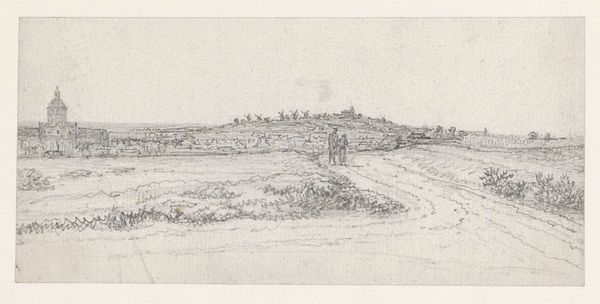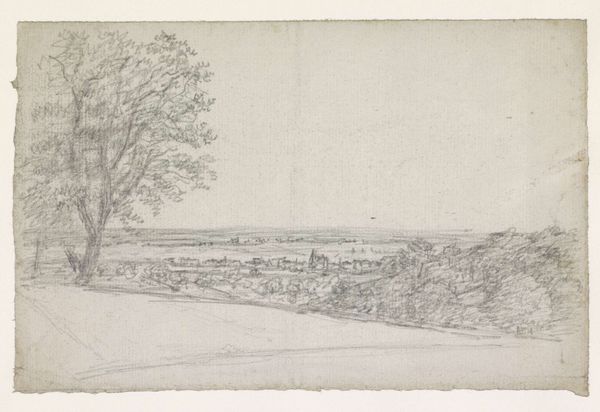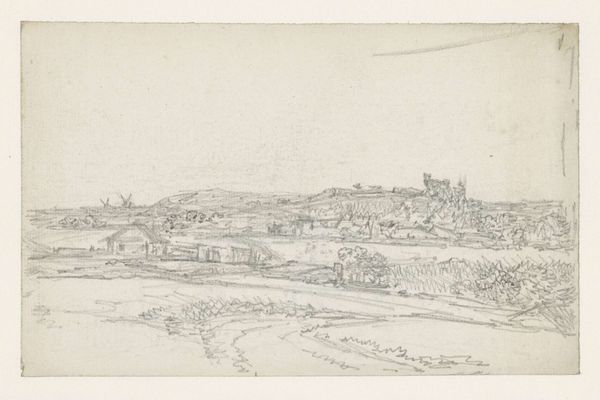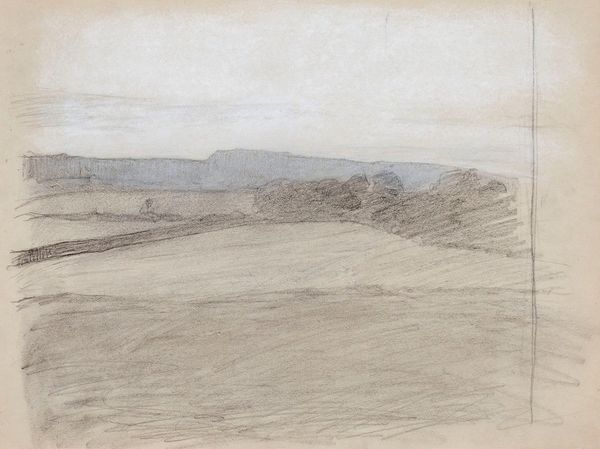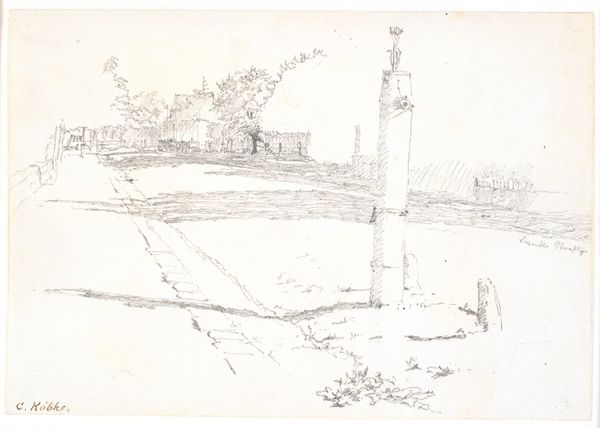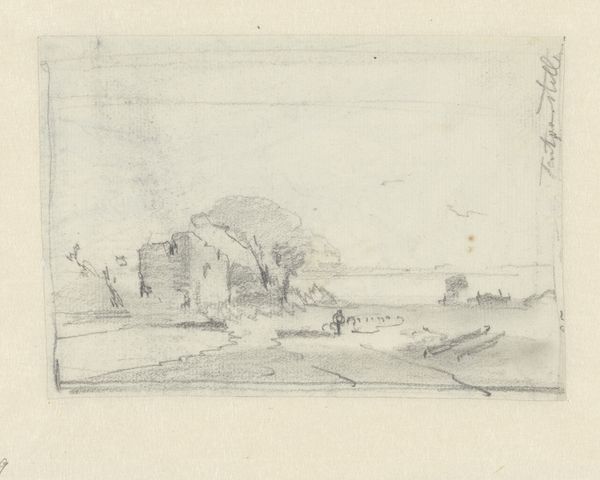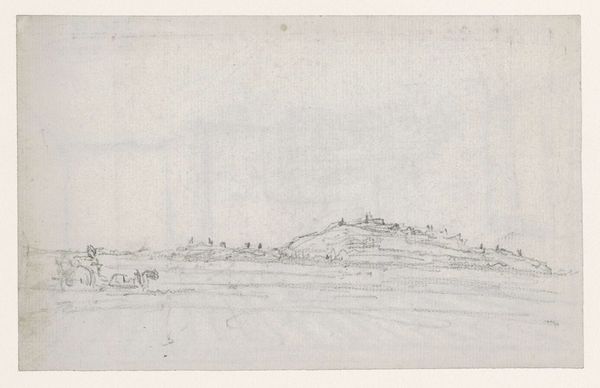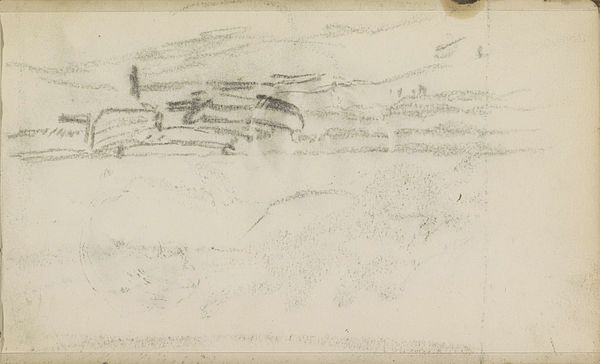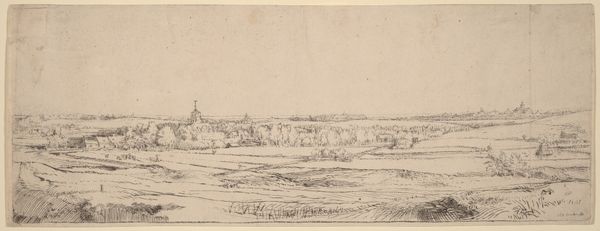
Heuvellandschap met mijninstallatie en elektriciteitspalen 1913 - 1945
0:00
0:00
henkhenriet
Rijksmuseum
drawing, pencil
#
drawing
#
landscape
#
pencil
#
realism
Dimensions: height 216 mm, width 263 mm
Copyright: Rijks Museum: Open Domain
Curator: Looking at "Heuvellandschap met mijninstallatie en elektriciteitspalen"—that translates to "Hilly Landscape with Mine Installation and Electricity Poles"—made sometime between 1913 and 1945 by Henk Henriët. It’s currently held at the Rijksmuseum. What strikes you about it initially? Editor: There's an immediate sense of stillness, almost melancholic. The landscape seems burdened by these stark industrial elements. Is this pencil drawing typical of Henriët's output at this period? Curator: To an extent, yes. Henriët often focused on landscapes, but he wasn't afraid to depict how industry reshaped the natural world. You notice how precisely the artist renders the textures and functional structures of these very same man-made interventions across the horizon. The materiality, it's the thing itself; the pencil meticulously crafting those forms. Editor: Exactly. It makes you think about labor. The mines visible in the distance would likely involve strenuous work, often in precarious conditions. Considering the work's time period, are there particular social or political implications of pairing the pastoral and the industrial in this way? Curator: Certainly. Given that this was a time of great social change, Henriët uses realism to illustrate this juxtaposition of nature and industrialization. What about this composition really jumps out at you? Editor: The dominance of these structures is stark. The electricity poles stride across the hills like invading figures, underscoring nature’s submission to industrial needs, demanding energy and land to extract what is beneath the soil. Curator: I wonder if we should interpret that energy consumption beyond solely as economic value and connect this with issues of natural resource exploitation. Henriët captures how resources become material capital, as he converts marks to shapes; almost converting material (landscape) to symbolic resources of cultural heritage as exhibited now in a museum! Editor: It’s as if we are seeing the before and after in a single frame; the idyllic pasture giving way to modernity, creating its own impact and challenges, which still haunt us today through questions of sustainable transition. It’s very layered. Curator: Ultimately it is interesting how Henriët converts social conditions to forms in these landscape works of labor extraction; with these new eyes, I wonder about our own time! Editor: Absolutely, reflecting on these intersections allows us to critically observe our contemporary challenges and our complex history.
Comments
No comments
Be the first to comment and join the conversation on the ultimate creative platform.
